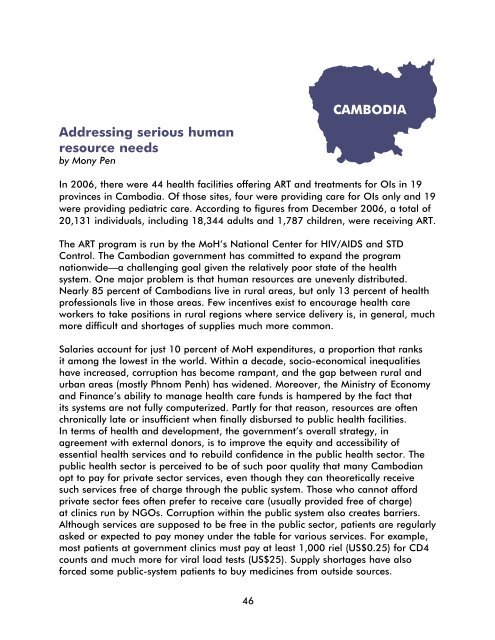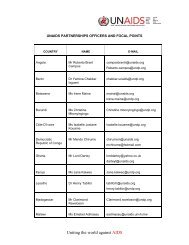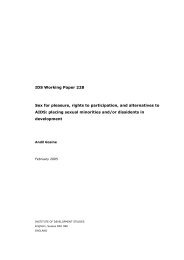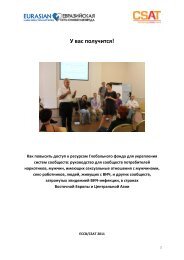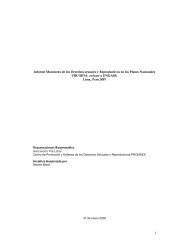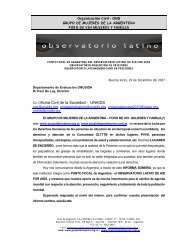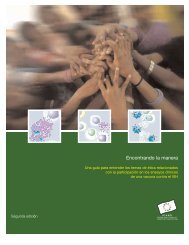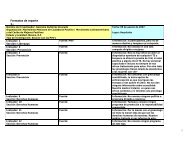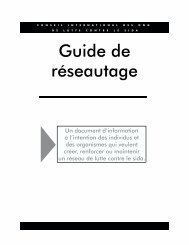Missing the Target #5: Improving AIDS Drug Access ... - CD8 T cells
Missing the Target #5: Improving AIDS Drug Access ... - CD8 T cells
Missing the Target #5: Improving AIDS Drug Access ... - CD8 T cells
Create successful ePaper yourself
Turn your PDF publications into a flip-book with our unique Google optimized e-Paper software.
Addressing serious humanresource needsby Mony PenIn 2006, <strong>the</strong>re were 44 health facilities offering ART and treatments for OIs in 19provinces in Cambodia. Of those sites, four were providing care for OIs only and 19were providing pediatric care. According to figures from December 2006, a total of20,131 individuals, including 18,344 adults and 1,787 children, were receiving ART.The ART program is run by <strong>the</strong> MoH’s National Center for HIV/<strong>AIDS</strong> and STDControl. The Cambodian government has committed to expand <strong>the</strong> programnationwide—a challenging goal given <strong>the</strong> relatively poor state of <strong>the</strong> healthsystem. One major problem is that human resources are unevenly distributed.Nearly 85 percent of Cambodians live in rural areas, but only 13 percent of healthprofessionals live in those areas. Few incentives exist to encourage health careworkers to take positions in rural regions where service delivery is, in general, muchmore difficult and shortages of supplies much more common.Salaries account for just 10 percent of MoH expenditures, a proportion that ranksit among <strong>the</strong> lowest in <strong>the</strong> world. Within a decade, socio-economical inequalitieshave increased, corruption has become rampant, and <strong>the</strong> gap between rural andurban areas (mostly Phnom Penh) has widened. Moreover, <strong>the</strong> Ministry of Economyand Finance’s ability to manage health care funds is hampered by <strong>the</strong> fact thatits systems are not fully computerized. Partly for that reason, resources are oftenchronically late or insufficient when finally disbursed to public health facilities.In terms of health and development, <strong>the</strong> government’s overall strategy, inagreement with external donors, is to improve <strong>the</strong> equity and accessibility ofessential health services and to rebuild confidence in <strong>the</strong> public health sector. Thepublic health sector is perceived to be of such poor quality that many Cambodianopt to pay for private sector services, even though <strong>the</strong>y can <strong>the</strong>oretically receivesuch services free of charge through <strong>the</strong> public system. Those who cannot affordprivate sector fees often prefer to receive care (usually provided free of charge)at clinics run by NGOs. Corruption within <strong>the</strong> public system also creates barriers.Although services are supposed to be free in <strong>the</strong> public sector, patients are regularlyasked or expected to pay money under <strong>the</strong> table for various services. For example,most patients at government clinics must pay at least 1,000 riel (US$0.25) for CD4counts and much more for viral load tests (US$25). Supply shortages have alsoforced some public-system patients to buy medicines from outside sources.46


